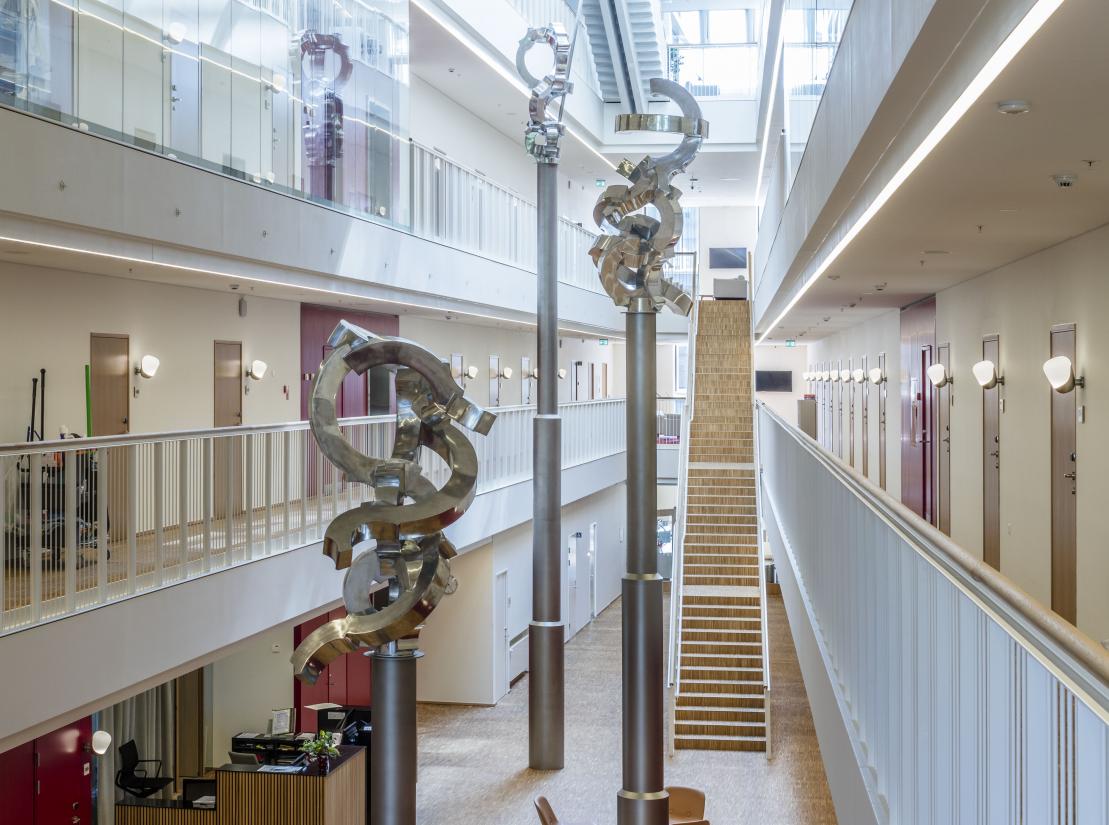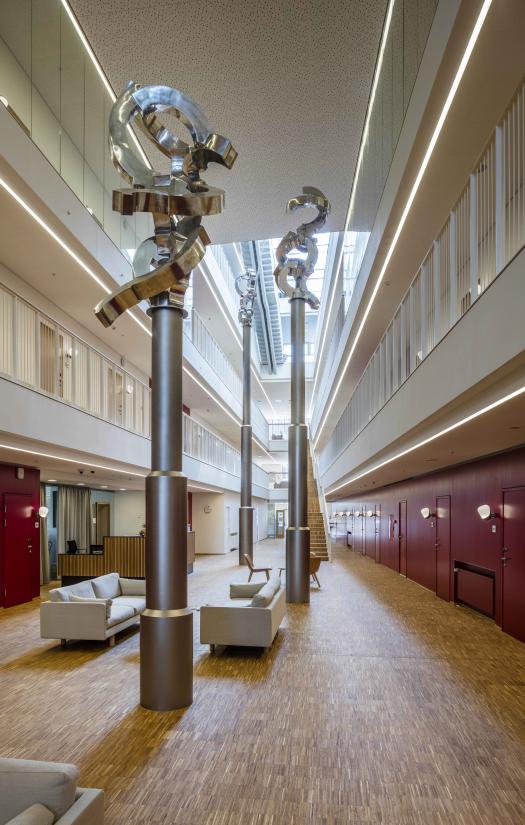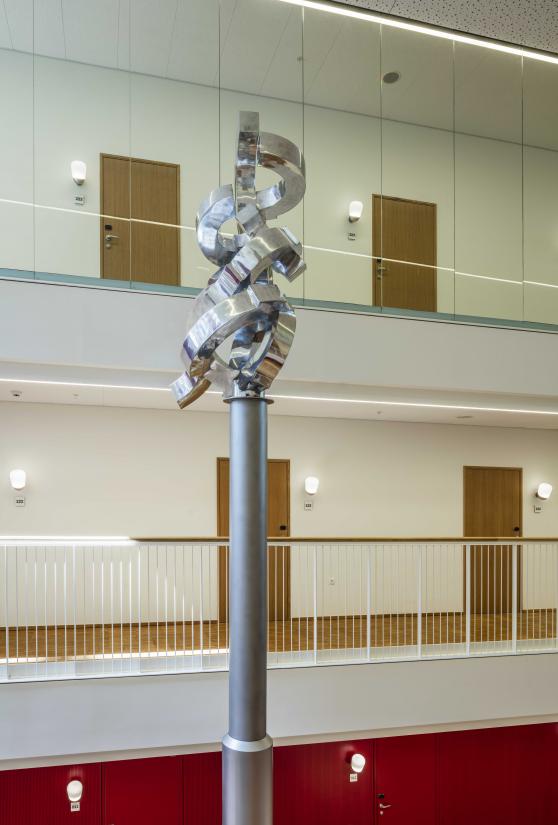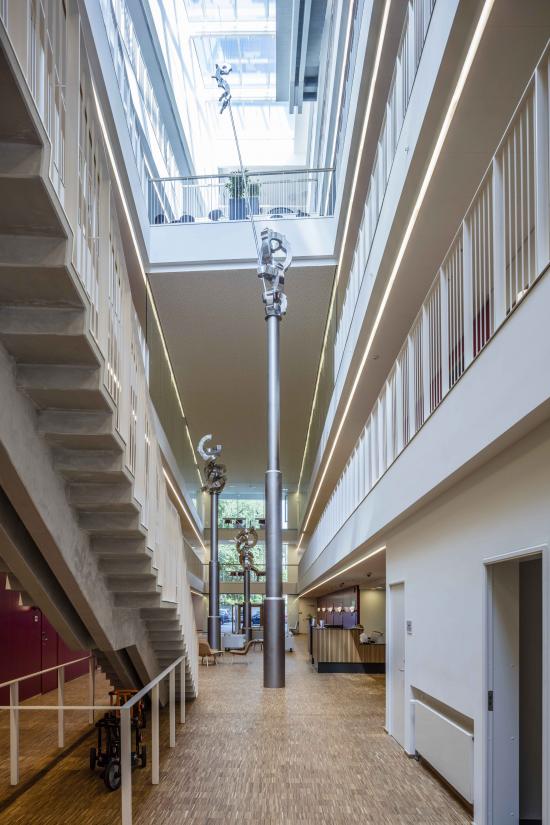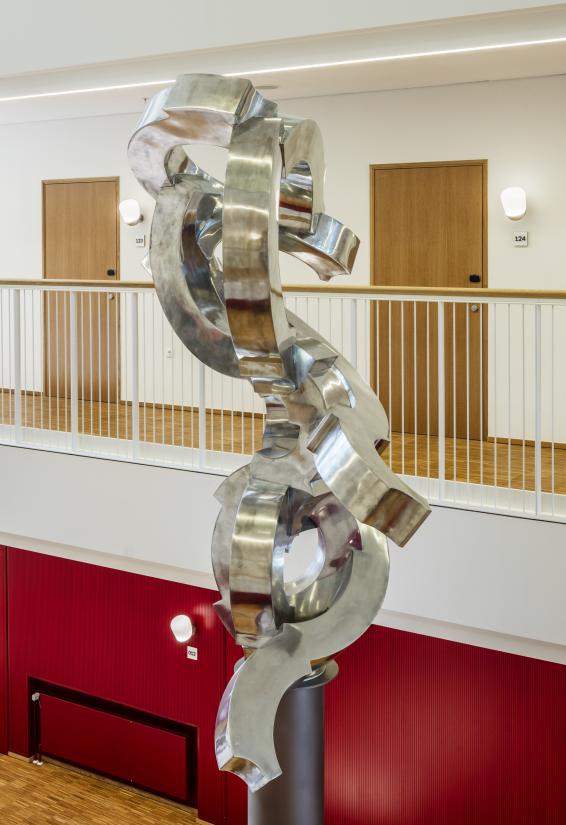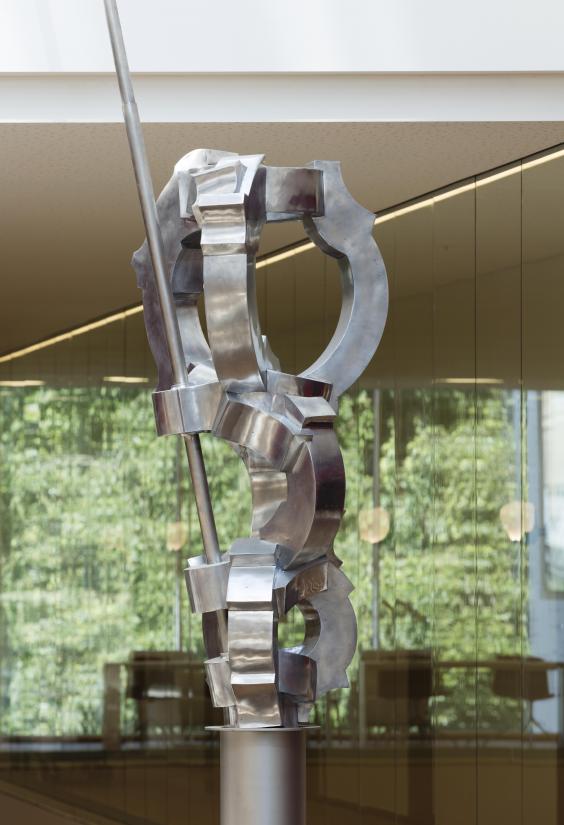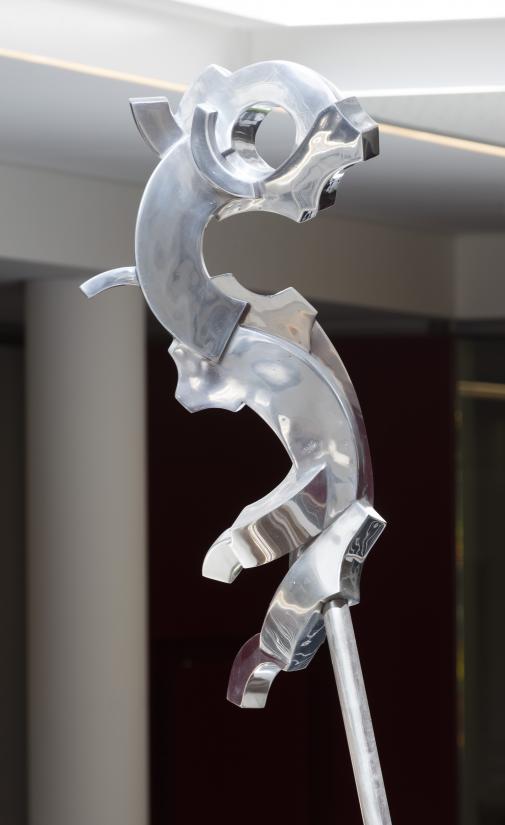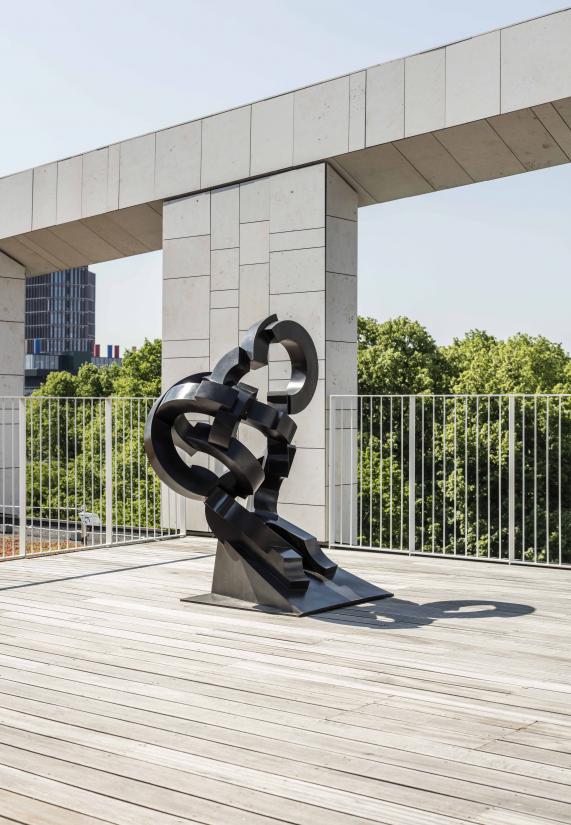‘I see the sculptures as angels looking backwards into the past while progress tugs and pulls at them. They hold their position among different forces or states: past and future, figuration and the abstract, open and closed,’ says Bjørn Poulsen.
The title of the artwork was taken from philosopher Walter Benjamin’s text on artist Paul Klee’s painting ‘Angelus Novus’ from 1920. The text deals with forces so powerful that even angels are blown away, like leaves in the wind.
The sculptures are constructed as transparent beam structures of concave and convex arcs embedded in one another based on a set of formal principles.
In the canyon
Inside the building, there are three sculptures, each standing on its own individual column. The columns rise, respectively, to the first, second and third floor – heights of approximately 3.5 metres, 6 metres and 8.5 metres; the tallest column has an added extension that brings it to a total height of 14 metres.
‘In the narrow, canyon-like room, the sculptures are thus viewed from different vantage points: from below, straight on and from above. The extension on the tallest column connects the two parts of the building by protruding into the administrative section through the floor of the patient hotel. A figure on a column has an essentially hierarchical character, but in this particular space, the hierarchical quality is eliminated as one moves up inside the building to stand at eye level with or above the sculptures on the different floors,’ Bjørn Poulsen explains.
Touching down
‘In cooperation with the Patient Hotel, we chose Bjørn Poulsen for this assignment because we were convinced that he had what it took to address this unusual space in a clever and original way. His solution is eye-catching, as we hoped it would be, and it appears as an artistic expression of the optimism and sense of progress that one senses, despite the presence of health issues, at the Patient Hotel. We also expect that the striking outdoor sculpture will offer a focal point and a landmark for the area,’ says Karsten Ohrt, chairman of the New Carlsberg Foundation.
The sculpture in front of the building completes the movement from the tallest column farthest inside the building, standing on a very low column and almost alighting on the ground, thus connecting outdoors and indoors, sky and earth. At 4.60 metres in height, this is by far the largest of the sculptures and also the most complex. It leans forward slightly, tipping on its balance point, as if it were battling the wind.
‘A figure standing on a column defies the ordinary and strives toward something higher or different. A figure on a column always expresses a certain optimism and “resilience”, simply by virtue of the fact that it made it to the top of the column. The figures that we normally see on columns include angels, saints, naval heroes, lure players or others whom we admire and wish to honour with this lofty position. These sculptures are more open to interpretation. They are not figures we recognize, but abstract expressions. Their figurative impact does not stem from recognizable elements but from their elevated position on the column,’ Bjørn Poulsen explains.
